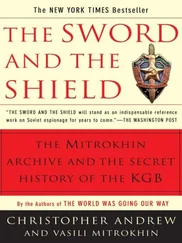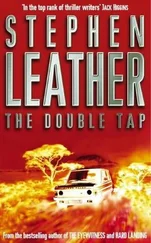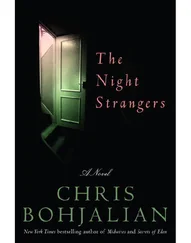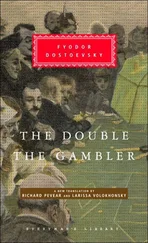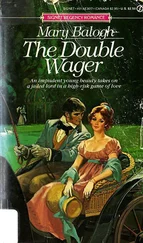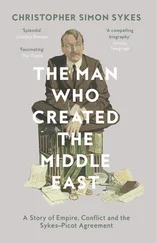Occasionally, she would bring one of her cameras and take their pictures. The children all knew just enough about computers and photography to be disappointed when she wouldn’t arrive with her digital camera, because they presumed when she started snapping away that they would get to see instantly what the pictures would look like. Consequently, sometimes Laurel would bring her digital for no other purpose than to entertain them. They would have casual modeling sessions, and then she would hook the Sony Cyber-shot up to the computer in the shelter manager’s closet of an office and print out the pictures.
The next week the family might be gone, but the images would still be taped to the windows and the walls.
Nevertheless, Laurel always preferred her film cameras, because-unlike most of the aspiring female photographers she had met in high school or in college-she actually enjoyed her work in the darkroom. Printing and toning. Moreover, she preferred black and white because she thought it offered both greater clarity and deeper insight into her subjects. In her opinion, you understood a person better in black and white, whether it was an abruptly homeless little girl in Burlington, Vermont, in the early years of the twenty-first century or a pair of drunken revelers at one of Jay Gatsby’s Long Island parties eighty years earlier.
On a certain level she felt voyeuristic, a bit like Diane Arbus, especially when she would photograph the children with their mothers. The mothers all looked dazed and drugged (which, sometimes, they were) and more than a little sociopathic (which, again, sometimes they were). But Laurel also had a thick notebook filled with nothing but contact sheets of her cousin Martin, who had Down syndrome, and she wondered if she would always feel slightly Arbus-like whenever she took anyone’s picture because so much of her training since junior high school had involved shooting him. Martin was a year older than she was, and he loved musical theater. His mother, Laurel ’s aunt, had sewn enough costumes for him over the years to fill a walk-in closet, and Martin would model these for Laurel for hours. The results were pages and pages of contact sheets of a teenage boy with Down syndrome, imitating in his own way everyone from Yul Brynner in The King and I to Harvey Fierstein in Hairspray. Laurel actually spent much of her recovery after she was attacked with Martin. Her friends from high school were all off at their colleges, and so she was very glad she had her cousin in her life. Her mother still referred to that period as that “awful autumn,” but in Laurel ’s opinion it really hadn’t been all that awful once she had returned to Long Island. She slept. She journaled. She healed. She and Martin must have seen a half-dozen Broadway shows together in those months of darkening days, always a matinee, which meant that when they entered the theater it was daytime and when they emerged it was evening and Times Square was an invigorating, phantasmagoric display of light. Then, the next day, careful not to jostle her slowly mending collarbone, they would reenact again and again their favorite scenes. Laurel was content in her own very specialized cocoon. And once she could use both of her arms again, she took even more pictures of a young man decked out in capes and bowlers and Scarlet Pimpernel wigs.
Every so often when Laurel was still in college, a single woman would wind up at the family shelter who was only a year or two older than she was. These women were at an age in which they were too old for the emergency shelter for teens run by another group in another section of the city, a small world where they might actually have felt the safest, but they were still too young to be comfortable in the wing of the shelter cordoned off for adults. Consequently, if there was room and they were clean-free of drugs, though not necessarily of grime and lice-they would be allowed to stay in the section for families.
Laurel would photograph them, too, even though more times than not they would try to sexualize the experience. Sex was their only currency and they used it determinedly if inappropriately. They would begin to peel off their tops, unsnap and unzip their jeans, or touch themselves and pout at the lens as if they were modeling for an adult magazine. They would, as the song said, try to show her their tattoos. It was almost a reflex for them because instinctively they ached even for Laurel ’s approval, and they knew cold and hunger intimately.
Only when she had been at the shelter close to a year and grown more comfortable with the world of the homeless did she begin to photograph the men, too. Initially, she had avoided that wing because of her experience in Underhill. And, of course, she had seen homeless men on the streets of New York when she’d been a little girl: bedraggled and grimy, malodorous, insane. Screaming or muttering obscenities either at strangers or-and this could be even more unnerving-at no one. But, clearly, she was worrying for naught. The homeless men who wandered through BEDS were frequently among the most gentle people on the planet. Sometimes it was bad luck and (yes) bad choices that had driven them down, not mental illness. And even when they were bipolar or schizophrenic-like Bobbie Crocker-when they were properly medicated often the madness would become manageable. And less frightening. Whenever Laurel looked at the contact sheets that she had made of these men, she was struck either by how broadly they were smiling or how wistful and unthreatening their eyes really were.
In the fall of her senior year, a twenty-two-year-old woman named Serena came to the family shelter. Serena told Laurel that things in her life had begun to unravel when she was fifteen. The final straw? Her father, who had been raising her alone and smacking her around since her mother had disappeared when she was five, pounded a sixteen-ounce glass jar of mayonnaise into the side of her face, blackening her eye and giving her a deep purple bruise the size of a softball along her cheek. For the first time in her life, she didn’t try to hide the marks with makeup, partly because she couldn’t-she would have needed an ice hockey goaltender’s mask, not a little powder and blush-and partly because she just couldn’t stand being beaten up anymore by her dad and wanted to see what would happen if people knew. She figured that things couldn’t possibly get any worse.
She was right. But they didn’t get better, either, at least not for a very long while. After all, is it worse to have a roof over your head but a father who pummels you weekly, or to move from house to house-a night here, a night there, living often with strangers-before eventually winding up on the street?
Serena hadn’t been in homeroom that day sixty seconds when her teacher asked to see her, and within an hour her father was arrested and she was in foster care. Unfortunately, there wasn’t an emergency placement available, and so she spent most of the next three weeks bunking with the families of different friends. She’d never been much of a student, and soon she gave up completely. Just stopped going to school. Within months, she wasn’t exactly off the foster care radar screen, but she was one of five or six dozen system runaways and no one was even sure if she was still in the state.
A week after Serena had arrived at the shelter and she and Laurel had grown comfortable with each other, Laurel asked to take her portrait, too. The homeless woman agreed. As Serena talked-continually rolling her black T-shirt up over her small stomach, trying to pull her jeans a bit farther down over her hips, pushing her long amber hair away from her eyes-Laurel photographed her. She would use the images for credit in a photography class, as she did many other pictures of the homeless she took. In addition, she planned to give Serena a set of the prints. The young woman wasn’t exactly beautiful: She had been on the street far too long for that. Her face was hollow-cheeked, hard, the bones apparent and sharp, and she was thin to the point of emaciation. But she had eyes the blue of delft china, her nose was pert and small, and her smile was fetching. There was something seductive and wanton and undeniably interesting about the whole package.
Читать дальше



